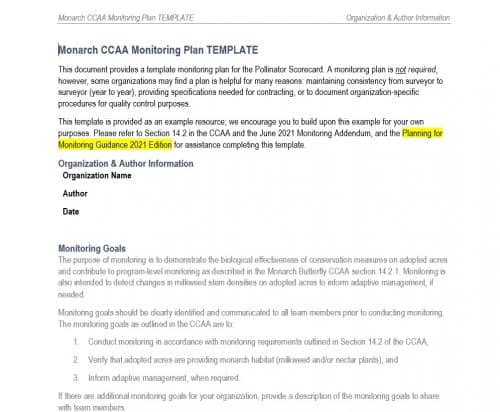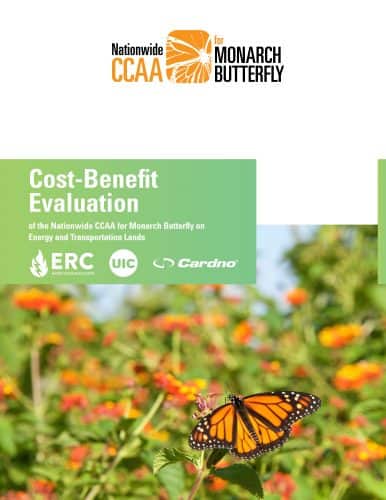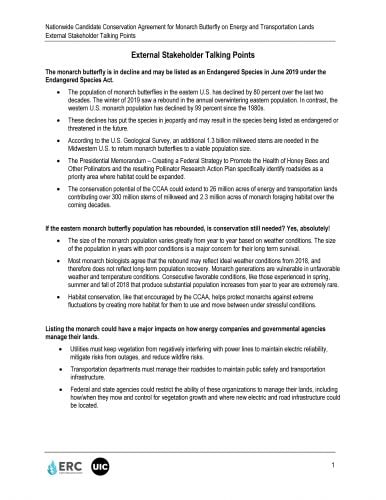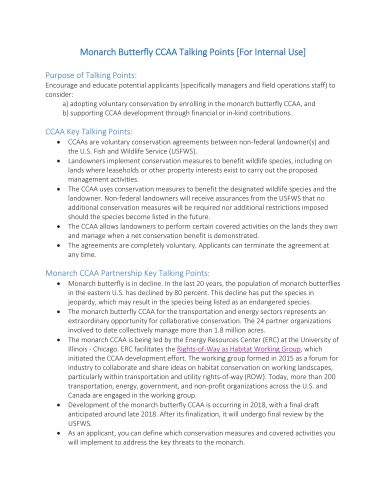
The purpose of this toolkit is to support interested applicants and enrolled partners participating in the Nationwide Monarch Butterfly Candidate Conservation Agreement for Energy and Transportation Lands (CCAA) and the Conservation Benefit Agreement for Bumble Bees (CBA).
The tools and guidelines linked here were developed to aid organizations in consistent and effective implementation of the CCAA and CBA. This toolkit also provides a place to find best practices and other resources developed collaboratively or sourced from across the CCAA and CBA partner network.
Liability for the implementation of the CCAA or CBA, or any use made of these implementation resources by its partners, is the sole responsibility of the partner itself. None of the authors, contributors, administrators, or anyone else connected with the CCAA or CBA, in any way whatsoever, can be responsible for your use of the information contained in or linked in these resources.

Assessment Tools, Conservation Agreements
Monarch Joint Venture and Xerces Society developed this Regional Milkweed Identification Guide for roadside habitat assessment. The guides are organized by region and can help you recognize the most common native milkweed species found on roadsides in your area.

Assessment Tools, Conservation Agreements
This document provides a template monitoring plan to support monitoring for the Monarch CCAA. A monitoring plan is not required, however, some organizations may find a plan helpful for many reasons, including maintaining consistency from surveyor to surveyor (year to year) or to document organization-specific procedures for quality control purposes.

Conservation Agreements
This document provides insights on how the Agreement can leverage a return on conservation investments made by participants of the CCAA.

Conservation Agreements
This document provides a variety of talking points on the listing decision extension and what it means for the Monarch CCAA.

Conservation Agreements
This document provides a variety of talking points to educate and promote external stakeholders to consider adopting voluntary conservation by enrolling in the monarch CCAA or supporting further CCAA development and conservation implementation.

Conservation Agreements
This document provides a variety of talking points to encourage and educate potential applicants (specifically managers and field operations staff) to consider adopting voluntary conservation by enrolling in the monarch CCAA and supporting further CCAA development.

